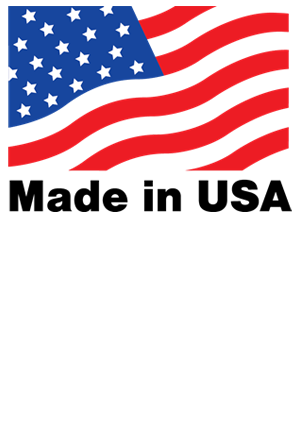
INTRODUCTION
Despite advancements in wound care technology and practices, hospital-acquired infections (HAIs) remain a major problem for many healthcare facilities. Approximately 4% of patients of patients in hospitals currently have an HAI, and an even greater number of patients will have an HAI at some point in their stay.1 These infections disproportionately affect the most vulnerable populations, including older adults or patients with compromised immune systems, thus making them a significant risk. Surgical site infections (SSIs) also make up a disproportionate number of HAIs, with an estimated 157,500 current cases in US hospitals.1 To prevent SSIs and other HAIs, it is critical that healthcare professionals understand the risk of infection and how to prevent cross-contamination.
THE IMPORTANCE OF PREVENTION
HAI prevention is important to promote rapid healing, improve patients’ comfort, and prevent complications. HAIs, including difficult to treat methicillin-resistant Staphylococcus aureus (MRSA), are major risk factors for patients and can be time-consuming and costly for healthcare professionals and institutions. To prevent the spread of HAIs, it is important to reduce cross-contamination in wound care. This means that healthcare professionals need to adopt best practices for wound care, including using dressings that help control cross-contamination.2-4
THE RISKS OF HOSPITAL ACQUIRED INFECTIONS
Controlling HAIs is one of the most important components of effective wound care. HAIs can make treatment significantly more expensive and may be very dangerous for patients. In one recent study, it was estimated that approximately 75,000 patients die
each year as a result of HAIs.1 With the effective use of modern best practices and wound care products, healthcare professionals can control these risks. Taking steps to reduce the risk of cross-contamination can help wounds heal more quickly, reduce costs, and save time.2
Hospital-Acquired Infections Are Prevalent
HAIs are extremely common. Among clean surgical procedures, the reported infection rate is 8% in the general population and as high as 25% among patients 60 years old or older.5 Clearly, this represents a significant number of patients, and healthcare practitioners could dramatically affect outcomes by reducing infection rates. Difficult to treat MRSA also poses a significant risk. Although hospital-acquired MRSA rates have been falling since the 1990s, healthcare professionals must remain vigilant. Staphylococcal infections resistant to commonly used antibiotics are significantly more difficult to control, thereby making them more dangerous to patients and a greater risk for cross-contamination.6
Hospital-Acquired Infections Are Costly and Dangerous
HAIs are a major challenge for both patients and healthcare professionals, by slowing healing times and potentially leading to dangerous complications such as sepsis and septic shock. Infections can cause significant discomfort for patients and can lead to inflammation, pain, and delayed healing.2,3 SSIs in particular are a major risk factors for patients and are associated with high mortality and morbidity rates. SSIs are also among the most common HAIs.7 HAIs are incredibly costly, both for patients and healthcare providers. Because they delay wound healing and can lead to more serious complications, they can add substantial time and effort to treatment. One study shows that HAIs cost patients and healthcare providers an additional $9.8 billion each year, with SSIs contributing the most to the overall cost among all infection types.8
Controlling Cross-Contamination is Key
Given the high risk of HAIs and the prevalence of antibiotic-resistant bacteria, it is important for healthcare professionals to make prevention the first line of defense against infection. One major component of this effort should be the reduction of cross-contamination. Cross-contamination is a leading cause of infection, particularly in hospital environments. Studies show that from 20% to 40% of nosocomial infections arise from cross-infection from a healthcare professional’s hands, and patients who occupied the same room as those carrying MRSA were shown to be at significantly higher risk of acquiring an infection.9
BEST PRACTICES TO REDUCE CROSS-CONTAMINATION
To prevent HAIs, healthcare professionals should take steps to reduce the risk of cross-contamination by adopting wound care best practices and using wound care products that are designed to lower cross-contamination potential. This will help ensure that HAI rates are minimized, thereby helping to lower costs and improve patients’ outcomes. Healthcare professionals can take the following key steps to control cross-contamination during wound care:
Isolate Infected Patients. Given that patients kept in rooms with those affected by MRSA are significantly more likely to contract an infection themselves, it is important that potentially contagious patients be isolated.9 In wound care practices, this also means taking extra precautions with infected patients, including not using the same roll of medical adhesive and being particularly careful to ensure that no pathogens are transmitted on hands, gloves, or tools.10
Keep Hands Clean. A high percentage of HAIs are transmitted by healthcare professionals’ hands and gloves. To reduce this risk, it is critical that healthcare professionals ensure that dressings are removed after washing hands and with a fresh pair of gloves and are applied only after washing hands and while wearing another fresh pair of sterile gloves.10
Prepare a Workspace. Before dressing a wound, it is important to be prepared, with all the necessary tools and materials in a sterile, easily accessible area. This helps prevent cross-contamination through other surfaces.10
Clean Wound Area. Foreign material and pathogens in the wound area can enter the wound during dressing changes. This makes it important that healthcare professionals clean the wound area thoroughly before dressing application. Use a gentle cleaning product that will not irritate the wound area, and carefully work from the dirty area to the clean area while being sure not to introduce dirt or other material into the wound.10
Clean Up. It is important that all potentially infected material be disposed of properly and that the work space be cleaned with soap and water or a disinfectant before the next use.10
Use the Right Wound Care Products. Choosing a dressing and adhesive that is secure, gentle, and designed to prevent cross-contamination can help lower the risk of HAIs by helping the wound heal properly, reducing irritation, and preventing the ingress of foreign material.10 One major source of cross-contamination is the dressing material itself. By using the same roll of medical adhesive among multiple patients, healthcare professionals increase the risk that infection will spread. Choosing an adhesive sold in hygienically sealed, single-use rolls can help reduce this risk.10,11
CONCLUSION
HAIs are a major problem in wound care management, and healthcare professionals must work proactively to prevent them. By following wound care best practices and taking other steps to reduce the risk of cross-contamination, healthcare facilities can help to control their HAI rates, stop the spread of MRSA, improve patients’ outcomes, and reduce costs.
How Hy-Tape Can Help
Hy-Tape makes a range of medical adhesive products that are secure, gentle, and effective. Hy-tape strips, patches, and kit rolls provide a wide range of options for securing dressings in unusual positions. Hy-Tape products are strong, gentle, and effective, and they hold a dressing firmly in place, no matter the location. By framing dressings with Hy-Tape, you can reduce the risk of peeling corners and create a longer-lasting dressing that will stay on for the entirety of the prescribed time, thus helping to reduce the risk of infection. Hy-Tape kit rolls come in a box of 100 single-use rolls that are discarded on use, a feature that reduces the risk of cross-contamination and infection. Hy-Tape products are also nurse approved. In a recent study involving patients with stage II, III, and III pressure ulcers treated with a hydrocolloid dressing secured by Hy-Tape, Hy-tape was given an “Excellent” rating by healthcare practitioners.12
To learn more about how Hy-Tape can help reduce the incidence of HAIs, contact one of our representatives or Click here to order a sample of Hy-Tape.
REFERENCES

